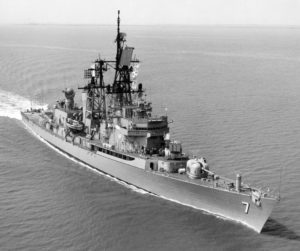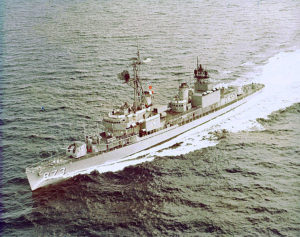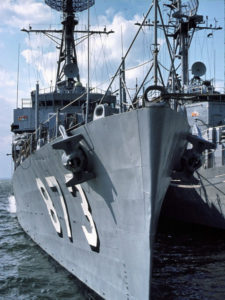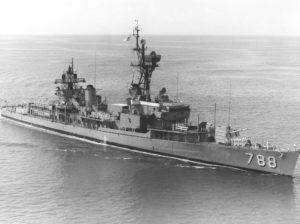This began with the idea of it being a couple of sea stories with some of my shipmate stories included. Mike Foster and i just recently reconnected.
As i began, i realized again how that short eight months were some of the most impactful in my life, determining the course i set for my Navy career. i also considered how it would add to my narrative for my grandson. So i began roughly about the time Sam’s mother was born.
i woke up thinking about it. In the middle of the night. Couldn’t get back to sleep for thinking about it. Didn’t want to forget what i was thinking about. If i had not been fearful of that, i probably could have resumed my slumber. Couldn’t. Had to get up and record it.
That happens quite frequently to me.
i used to wake up and start thinking about relationships going south and not understanding why. My brain would get entangled with why the south bound bond had deteriorated. Then, that ole brain of mind would start plotting how to turn it around with me knowing all the while that wouldn’t happen. But then, i have always been a dreamer, an optimist. Finally, i went to a counselor and she (Martina Clarke) was marvelous for me. i don’t think about those kind of things anymore. i accept the fact i can’t control others perception of me. i just have to keep trying to do what’s right. That happens when you get as old as me, i think.
But this was a whole different matter. These were positive thoughts, pleasant. i wanted to save them. Why? i don’t know. My only answer is i am a writer, always have been, just didn’t always admit it.
* * *
 Recently, i hooked up (electronically) with an old shipmate. We have been communicating quite a bit about Navy things. Mike Foster is the president of World Wide Realty Solutions out of Connecticut. But in 1972-73, he was one of the four OOD’s on the USS Luce (DLG 7) with me, often relieving me on watch. Our communication has brought back recall of the shortest and one of the most rewarding tours i had in my Navy career.
Recently, i hooked up (electronically) with an old shipmate. We have been communicating quite a bit about Navy things. Mike Foster is the president of World Wide Realty Solutions out of Connecticut. But in 1972-73, he was one of the four OOD’s on the USS Luce (DLG 7) with me, often relieving me on watch. Our communication has brought back recall of the shortest and one of the most rewarding tours i had in my Navy career.
There will be some repeats of my other seas stories in here. Yet, my experience on the Luce should stand as whole as i remember it:
 It was a defining eight months of my life. It began because i had applied and been accepted for recall to active duty. i was one of six officers accepted back in that year as surface line officer. A primary reason my application was successful was Captain Max Lasell, the commanding officer on my first ship, the USS Hawkins (DD 873), had appeared before the board and recommended i be accepted.
It was a defining eight months of my life. It began because i had applied and been accepted for recall to active duty. i was one of six officers accepted back in that year as surface line officer. A primary reason my application was successful was Captain Max Lasell, the commanding officer on my first ship, the USS Hawkins (DD 873), had appeared before the board and recommended i be accepted.
As with all things, i wasn’t sure i was doing the right thing, but i felt was necessary to adequately provide for my family. i had a promising career (i felt) ahead of me in sports journalism. i was the sports editor of The Watertown Daily Times, a model of excellence as a mid-size daily in upstate New York. i had been successful enough to either rise further in that organization or attain success by moving on to a major daily in a big city. i was confident of my future but the rules of the guild kept management from paying me enough for adequate financial security. Had it just been my wife and i, we could have toughed it out, but our child was scheduled to arrive on the scene. i couldn’t see ends meeting. Thus, i applied to get back in.
Another little problem was my reserve status. Even though i was accepted back for active duty, i was informed if i did not achieve becoming a regular line officer (a designation of 1110, rather than 1105) within a year, i would be discharged. That would have made our situation untenable. So the heat was on.
Our daughter Blythe was born July 7, 1972. i left the newspaper as August rolled around, carted my wife Kathie and our daughter to Paris, Texas via my home of Lebanon, Tennessee, parked them with my in-laws and left at the end of the month to catch my new ship, the Stephen B. Luce somewhere in the Mediterranean.
i flew to Newark and then caught a MAC (Military Airlift Command, an Air Force organization) to Rota, Spain. After a day, my next flight was to Naples. A LDO lieutenant and two chief petty officers took our one night of liberty to find an off-limit area, not because of the red lights but because one of the chiefs had heard of this great Italian restaurant in the forbidden sector. And so, we went. Somewhere in the middle of Naples, we cut off the main street and walked up a stairway. Now, this was not an ordinary stairway. It was about fifty or sixty feet wide, a street not for vehicles really with a stair level every ten feet or so. We walked up those stairs for about a quarter mile. The chief who had hooked into this adventure nodded toward a single door among the many.
i still don’t have a clue how the chief knew of this place and i am dumbfounded as to how he might have located it. This was long before Google maps. But there we were four Navy personnel in civilian clothes deep in the heart of Naples somewhere, with no capability to speak Italian surrounded by oh, about a gazillion Italians who could not speak English.
We walked in. There were about six tables the size of card tables, covered with white table cloths and a wine bottle candle in the middle of each table. Three of the other tables were occupied. We were led to one in the middle of the room. in a room about twenty by twenty feet. i am not even sure we ordered. i don’t remember a menu. Perhaps the chief used a hand signal.
Quickly, four drinking glasses came out and shortly afterward a bottle of wine, unlabeled with the cork halfway out was placed next to the candle setting. A basket of bread soon followed. Then after about five minutes, the waitress, a portly, dark complected woman, brought out four white plates filled with…yep, spaghetti and meatballs.
Oh lord, was it good. In my recall, it was the best. Everything was perfect. My kind of place. at the top of the front wall, they had a television, i’m guessing a 15-inch set. The ’84 Munich Summer Olympics were on the screen in Italian of course. It was the track and field events they were showing — this was prior to the terrorist killing 11 Jewish athletes, one of their coaches, and a police officer by “Black September” Palestinians. When we finished our meal and the second bottle of that red wine, chianti, i don’t know, but it was good; paid and tipped generously; nodded and nodded our appreciation, we left.
i don’t know how but the chief got us to the main street, we caught a cab and went back to the US Naval Base.
It was good. The next morning, i was the only one to catch a flight to the Kerkyra International Airport on the island of Corfu off the west coast of Greece. i arrived in the mid-afternoon, looking forward to a night on a Greek isle. That’s when i learned the ship would depart for a big exercise the next morning. i stayed aboard and hit the rack early.
Good start to a deployment? Maybe.


